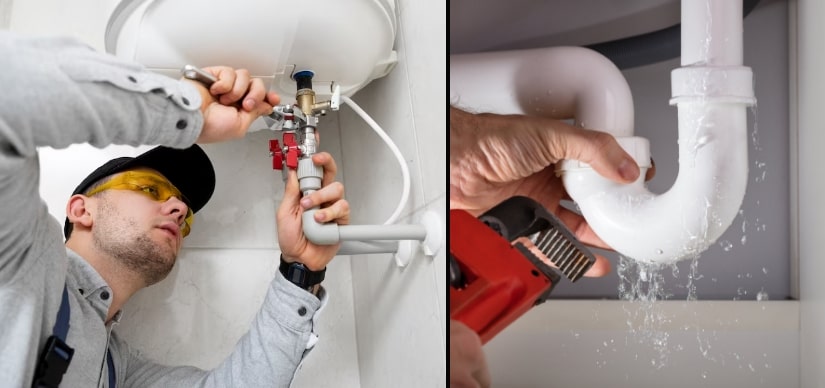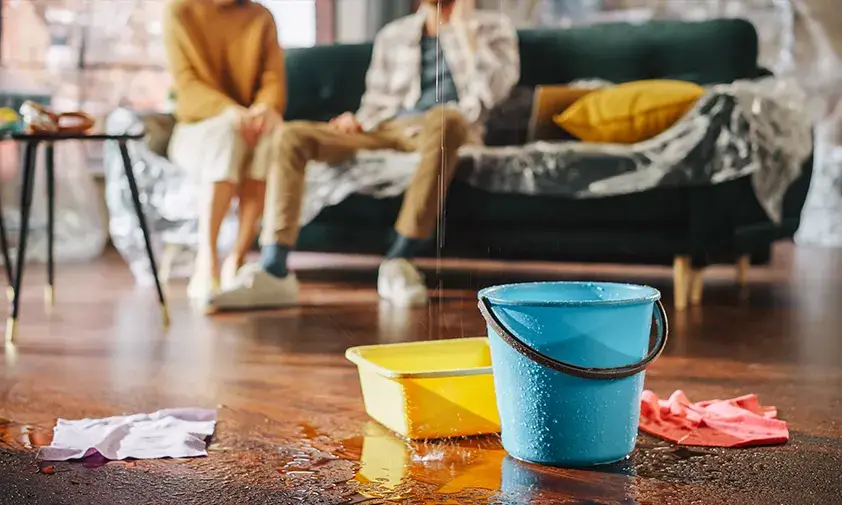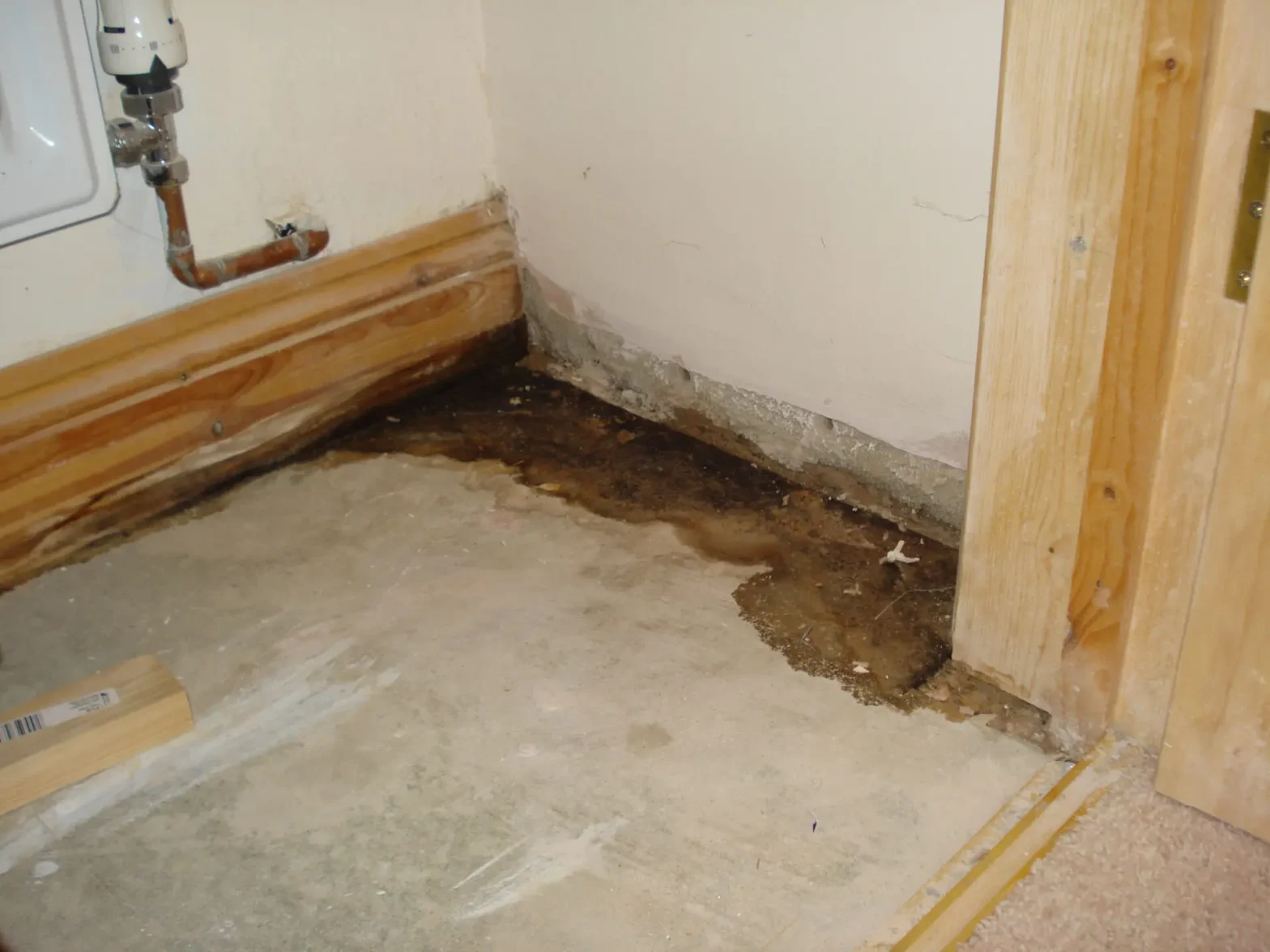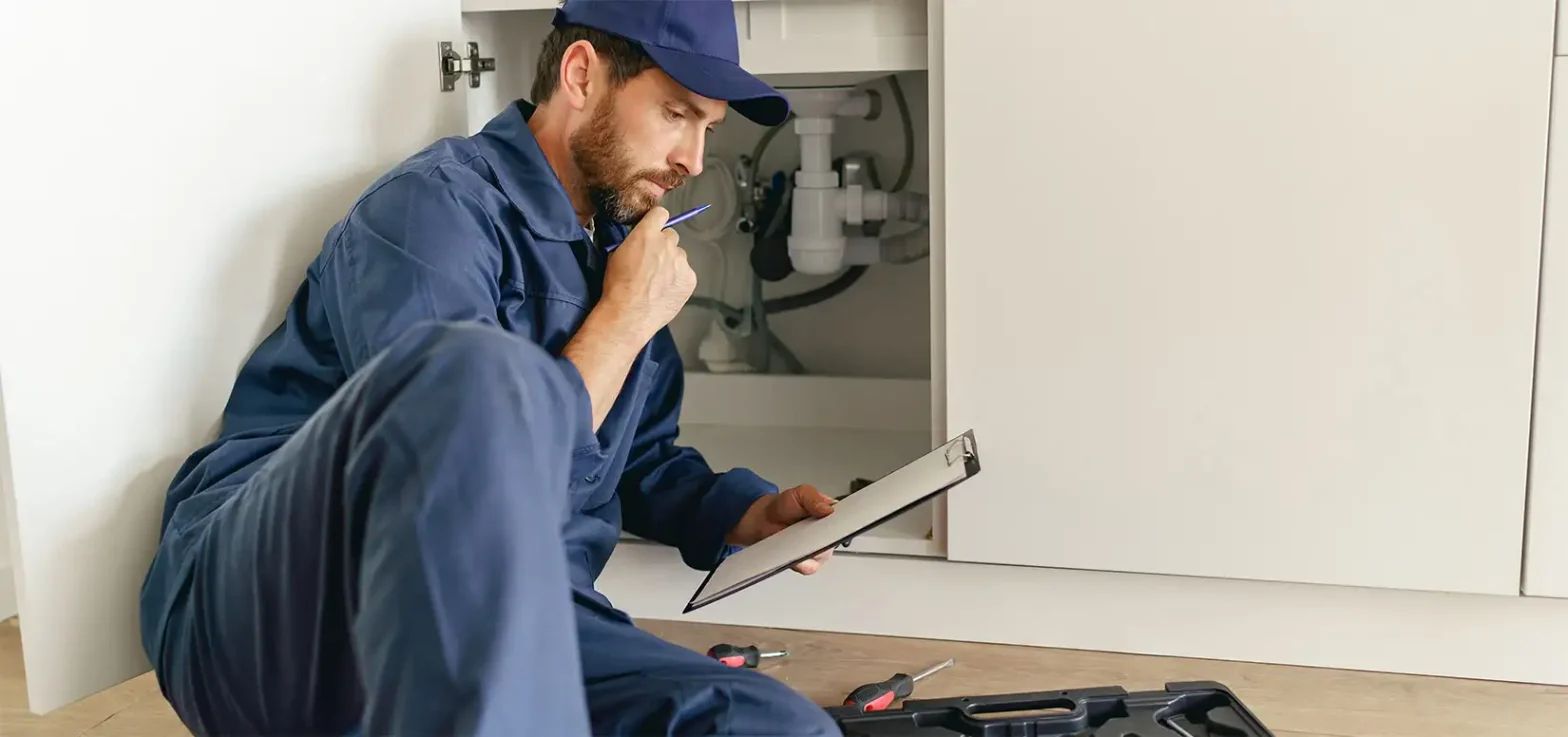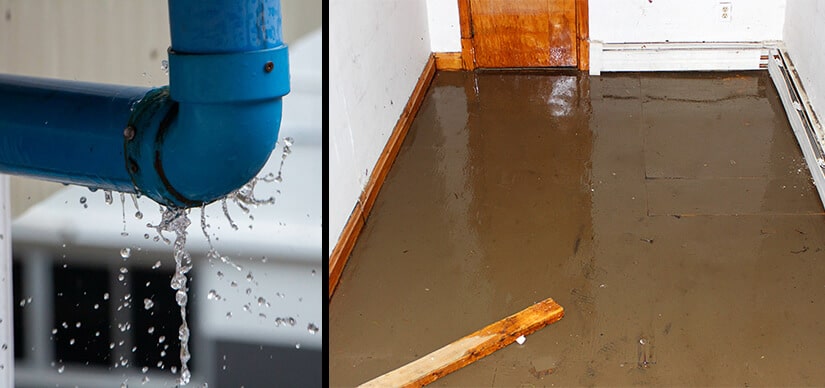Importantance of Fixing a Burst Pipe Before Water Damage Occurs
A water pipe burst refers to the sudden rupture or breakage of a water pipe, causing a significant and often unexpected release of water into the surrounding area. This can occur in both residential and commercial plumbing systems. Water pipe bursting can vary in size and severity, ranging from minor leaks to major breaches, and they can have various causes. Your residential place can suffer greatly from water damage, which can lead to expensive structural repairs.
Therefore, it is crucial to repair the burst water pipe as soon as possible. Here in this article, we will discuss on why pipe bursts or leaks, signs of water damage due to pipe bursts or leakage, the cons of pipe bursts, and why it is important to fix a burst pipe.
What Causes a Pipe to Burst or Leak?
Various factors, from normal wear and tear to more serious damage, can cause pipes to leak. Several typical reasons for pipe leaks include:
Freezing Temperatures: One of the most common causes of pipe bursting is freezing temperatures. When water inside a pipe freezes, it expands and can exert tremendous pressure on the pipe walls. This pressure can lead to cracks or bursts in the pipe. Pipes that are exposed to cold outdoor temperatures or located in unheated areas of a building are particularly vulnerable.
Corrosion: Over time, pipes can corrode from the inside out, especially if they are made of metal materials like iron or steel. Corrosion weakens the pipe walls, making them more susceptible to leaks and ruptures. Generally, this issue occurs in older plumbing systems.
High Water Pressure: Excessively high water pressure within the plumbing system can stress and weaken pipes, eventually causing them to burst. Installing pressure-reducing valves can help regulate water pressure and protect pipes from damage.
Age and Wear: As pipes age, they become more prone to deterioration and leaks. The materials used in older pipes may not be as durable as modern alternatives. Galvanized steel and cast iron pipes, for example, are susceptible to rust and corrosion over time.
Physical Damage: External forces can damage water pipes and lead to leaks or bursts. This can occur during construction, excavation, or even accidental impact. Tree roots growing into underground pipes can also cause physical damage over time.
Poor Installation: Incorrect installation or poor workmanship during the construction or repair of plumbing systems can result in weak connections, joints, or improperly secured pipes, which may lead to water leaks.
Water Quality: Aggressive or corrosive water can accelerate pipe deterioration. Water that is highly acidic or contains contaminants can contribute to corrosion and pipe degradation.
Water Hammer: A water hammer is a phenomenon that occurs when the flow of water is suddenly stopped or redirected within the plumbing system. The abrupt pressure changes can stress pipes, joints, and fixtures, potentially causing water leaks or pipe bursts.
Chemical Reactions: In some cases, chemical reactions between the pipe material and the water it carries can weaken the pipes and lead to leaks or bursts. This is more common with certain types of plastic pipes.
Joint Failures: Weak or faulty pipe joints, such as soldered or glued connections, can develop leaks over time due to wear and tear or poor craftsmanship.
Early Signs of Possible Water Pipe Burst
In most of the scenarios before pipe bursts, there will be some signs which indicate the damage in the pipeline through water leakage. It’s essential to address these issues promptly. Water damage can lead to structural problems, health hazards from mold, and costly repairs if there is a pipe burst.
Visible Stains: Water stains on ceilings, walls, or floors are one of the most obvious signs of water damage. They often appear as discolored patches or streaks and may range in color from yellow to brown.
Peeling or Bubbling Paint or Wallpaper: When water infiltrates behind the paint or wallpaper, it can cause these materials to bubble, crack, or peel.
Warped or Buckled Flooring: Water can cause wooden and laminate floors to warp or buckle. In some cases, you may notice the floorboards lifting or separating.
Musty Odors: Mold and mildew thrive in damp environments. A musty or earthy smell, especially in basements or areas with poor ventilation, can be a sign of water damage and mold growth.
Mold or Mildew Growth: Visible mold or mildew growth on surfaces like walls, ceilings, or corners is a clear indicator of moisture problems. Mold often appears as dark spots or fuzzy patches.
Softened or Crumbling Drywall: When drywall gets wet, it can become soft, swell, or crumble. You may notice the walls feeling spongy or see visible damage.
Sagging or Dripping Ceilings: A leaking roof or plumbing issue can lead to sagging or dripping ceilings. This is a critical issue that should be addressed immediately to prevent further damage and potential collapse.
Water Puddles or Standing Water: Obvious pools of water in your home are clear signs of a water leak or flood. Investigate the source of the water immediately.
Damaged or Discoloured Grout: In bathrooms and kitchens, water damage can affect the grout between tiles, causing it to deteriorate, crack, or become discolored.
Rusty or Corroded Pipes: Inspect your plumbing for signs of rust or corrosion. This could indicate a slow leak or ongoing moisture problem.
Higher Water Bills: If your water bills have increased unexpectedly, it could be a sign of a hidden water leak in your plumbing.
Electrical Issues: Water damage can affect electrical systems, causing shorts, outages, or flickering lights. If you notice any electrical problems, consult a professional immediately, as it can be a fire hazard.
Efflorescence: This is a white, powdery substance that can appear on basement walls or other masonry surfaces. It’s caused by water evaporating and leaving behind mineral deposits.
What Damage Can a Burst Pipe Do?
What happens when a water pipe bursts? A water pipe burst in your home or property can lead to a variety of immediate and long-term dangers. Here are some of the potential dangers associated with a water pipe burst:
Water Damage: The most immediate danger is the extensive water damage it can cause to your property. Water can damage walls, floors, ceilings, furniture, electronics, and personal belongings. This can lead to costly repairs and replacements.
Structural Damage: Prolonged exposure to water can weaken the structural integrity of your home. It can lead to rotting wood, rusting metal, and compromised building materials, potentially causing structural damage that requires extensive repairs.
Mold Growth: Excess moisture from a burst pipe can create ideal conditions for mold and mildew growth. Mold can develop within 24-48 hours in damp environments. Exposure to mold can cause respiratory problems, allergies, and other health issues.
Electrical Hazards: Water can come into contact with electrical systems, creating a risk of electrical shocks, short circuits, or fires. If you suspect water has affected your electrical wiring or outlets, it’s crucial to turn off the power to the affected area and seek professional assistance.
Slip and Fall Hazards: Standing water can create slippery surfaces, increasing the risk of slip and fall accidents. This is particularly dangerous for children, the elderly, and individuals with mobility issues.
Property Damage: Burst pipes can damage personal property, including appliances, electronics, and valuable items. In some cases, these items may not be salvageable.
Loss of Valuables: Water damage can lead to the loss of important documents, family heirlooms, and sentimental items that cannot be replaced.
Contaminated Water: Depending on the source of the water, it may be contaminated. For example, if a sewage pipe bursts, it can release sewage water into your home, posing significant health risks due to bacteria and pathogens.
Increased Utility Costs: A burst pipe can result in a significant increase in your water bills until the issue is resolved. The continuous flow of water can be wasteful and costly.
Disruption to Daily Life: Dealing with a burst pipe can disrupt your daily routine, requiring immediate attention to stop the leak, clean up, and coordinate repairs.
Insurance Costs: Depending on your insurance policy, you may incur increased premiums or have to pay deductibles for water damage claims.
Also Read: 6 Steps To Take When Dealing with Flooded Water Damage from a Burst Pipe
Importance of Burst Pipe Repair
Repairing a burst pipe is of utmost importance for several reasons, as neglecting this issue can lead to significant consequences. Here are the key reasons why prompt repair of burst pipes is essential:
Preventing Further Damage: A burst pipe can release a large volume of water into your home or property in a short amount of time. The longer the water flows, the more extensive the damage becomes. Repairing the burst pipe promptly helps prevent additional water damage to your property, including structural damage, mold growth, and damage to personal belongings.
Minimizing Repair Costs: The longer you delay repairing a burst pipe, the more extensive and costly the repairs can become. Water damage can weaken building materials, cause structural issues, and damage electrical systems. Timely repairs can minimize the overall cost of restoration.
Preventing Mold Growth: Excess moisture from a burst pipe can create ideal conditions for mold and mildew to grow. Mold can start developing within 24-48 hours in damp environments. Promptly repairing the burst pipe and thoroughly drying the affected areas can prevent or mitigate mold growth, which can be a health hazard and require additional remediation.
Reducing Health Risks: Depending on the source of the water (e.g., clean water, sewage, or contaminated water), a burst pipe can pose health risks. Contaminated water can carry harmful bacteria and pathogens. Addressing the issue promptly helps reduce the risk of exposure to these contaminants.
Preserving Property: Burst pipes can damage not only the structure of your property but also personal belongings, appliances, and electronics. Quick repairs can help salvage valuable items and prevent further property loss.
Restoring Normalcy: Burst pipes can disrupt your daily life by causing water shut-offs, property damage, and inconvenience. Prompt repairs can help restore normalcy to your home or business more quickly.
Energy Efficiency: Water damage can affect the efficiency of your HVAC systems and other appliances. Repairing the burst pipe can help maintain the energy efficiency of your home, potentially reducing utility costs.
Preventing Insurance Issues: Timely repairs can help avoid complications with insurance claims. Insurance providers may have specific requirements regarding reporting and mitigating water damage. Failing to take prompt action may affect your ability to file a successful claim.
Environmental Concerns: Unchecked water flow from a burst pipe can lead to water wastage, which is both costly and environmentally irresponsible. Repairing the pipe helps conserve water resources.
Safety: Burst pipes can create slippery surfaces and electrical hazards, posing safety risks for occupants. Repairing the pipe promptly mitigates these dangers.
How Much Does a Burst Pipe Repair Cost?
The cost of repairing a burst pipe can vary significantly based on several factors, including the location of the burst, the severity of the damage, the type of pipe, and your location. Here are some factors that can influence the cost of burst pipe repair:
Location of the Burst: The location of the burst pipe within your home or property can have a significant impact on the cost. Pipes that are easily accessible, such as those in basements or crawl spaces, are generally less expensive to repair than pipes located within walls, ceilings, or under concrete slabs.
Type of Pipe: The type of pipe that burst can affect the cost. Common types of residential pipes include copper, PVC, PEX, and galvanized steel. The cost of materials and labor may vary depending on the type of pipe.
Extent of Damage: The severity of the damage caused by the burst pipe is a crucial factor. If the burst is minor and limited to a small section of the pipe, the repair may be relatively simple and inexpensive. However, if the burst has caused extensive damage to surrounding materials or requires replacement of a significant portion of the pipe, the cost will be higher.
Accessibility: Accessibility to the burst pipe is a key consideration. If the pipe is easy to access, the repair process is typically quicker and less expensive. If the pipe is located in a hard-to-reach area, such as within walls or under the foundation, it may require more labor and time, increasing the cost.
Local Labor Rates: Labor rates for plumbing services can vary significantly from one region to another. Areas with a higher cost of living tend to have higher labor rates, which can impact the overall repair cost.
Emergency Repairs: If you require emergency pipe repairs outside of regular business hours, such as on weekends or holidays, you may incur additional costs for emergency service fees.
Additional Repairs: In some cases, a burst pipe may have caused damage to other parts of your property, such as flooring, drywall, or insulation. The cost of repairing these additional damages will be separate from the pipe repair cost.
Given the various factors that can influence the cost, it’s challenging to provide a specific amount for burst pipe repair without assessing the individual circumstances. However, as a rough estimate, simple repairs to accessible pipes may range from a few hundred to a few thousand dollars. More complex repairs that involve extensive pipe replacement, structural repairs, or water damage restoration can cost several thousand dollars or more.
To get an accurate cost estimate for your specific situation, it’s advisable to contact a licensed and experienced plumber in your area. They can assess the damage, provide a detailed quote, and discuss the necessary repairs and associated costs with you. Additionally, if you have homeowner’s insurance, check whether burst pipe repairs are covered under your policy, as this can help offset some of the costs.
Conclusion
In summary, the importance of repairing a burst pipe promptly cannot be overstated. It not only prevents further damage, reduces repair costs, and minimizes health risks but also helps preserve your property and restore normalcy to your life. If you discover a burst pipe, it’s crucial to shut off the water supply immediately and contact a professional plumber for repairs.
We at All Star Plumbing & Restoration recognize the value of prompt and effective plumbing repairs. Our team of skilled plumbers in San Diego are available at your service 24 hours a day 7 days a week to provide emergency plumbing services. Call us and we will respond within 60 minutes.
Emergency Burst Pipe Repair At Your Service
Related Posts


